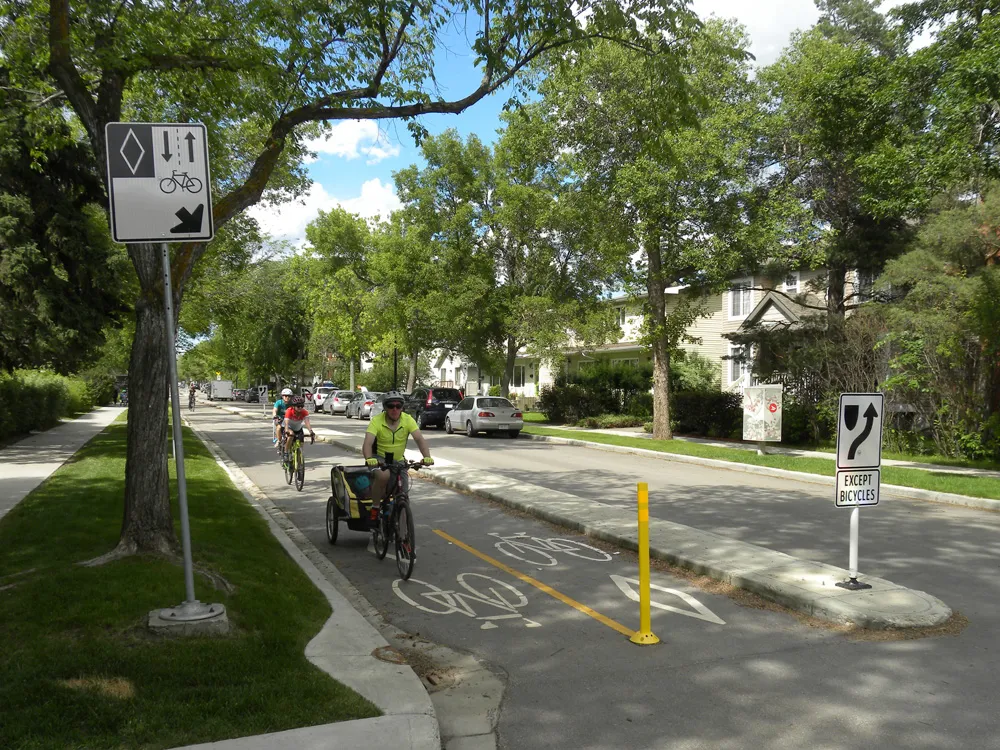New crosswalk signs have been installed in installed several southwest Michigan cities as part of a joint research project by the Michigan Department of Transportation (MDOT) and Western Michigan University (WMU). The project involves testing the crosswalk signs as potential low-cost safety measures to increase pedestrian safety and motorist awareness.
The signs are designed to be permanently affixed to the road but can be removed for the winter when snow removal is necessary. The signs will be removed i
August 21, 2015
Read time: 2 mins
New crosswalk signs have been installed in installed several southwest Michigan cities as part of a joint research project by the 1688 Michigan Department of Transportation (MDOT) and Western Michigan University (WMU). The project involves testing the crosswalk signs as potential low-cost safety measures to increase pedestrian safety and motorist awareness.
The signs are designed to be permanently affixed to the road but can be removed for the winter when snow removal is necessary. The signs will be removed in mid-November this year and the research results are expected to be published early next year.
The signs have been installed at 10 crosswalks in three roundabouts and six intersections in five MDOT Southwest Region communities. Installation sites were chosen primarily to get a variety of intersection configurations such as full intersections, roundabouts, mid-block crosswalks, etc. Dr Ron Van Houten, the traffic safety research expert leading the WMU study said several factors were considered, such as lane width, the messages on signs and the types of signs used.
Van Houten said the study already is showing signs of increased pedestrian safety. "People are looking for pedestrians with the signs there," he said. "Our data shows drivers slow a bit, their heads are turning, and that is a good thing in an urban environment."
Carissa McQuiston, MDOT project manager and non-motorised safety engineer, said the study is designed to increase pedestrian crossing awareness for pedestrians and drivers. Signs have been placed at crosswalks in the road at the edge lines, centre lines and lane lines.
"We have very good preliminary data that supports this installation as a way to inform drivers of pedestrian presence and highlight their crossing activity," McQuiston said. "With these installations, the researchers are collecting data about pedestrian safety, drivers yielding, and the durability of the signs."
Van Houten said while the signs are designed to withstand some abuse from traffic, there has to be a balance of durability and cost. "Ideally, they will last a long time," he said. "It will cost the department more money if they have to replace them frequently."
The signs are designed to be permanently affixed to the road but can be removed for the winter when snow removal is necessary. The signs will be removed in mid-November this year and the research results are expected to be published early next year.
The signs have been installed at 10 crosswalks in three roundabouts and six intersections in five MDOT Southwest Region communities. Installation sites were chosen primarily to get a variety of intersection configurations such as full intersections, roundabouts, mid-block crosswalks, etc. Dr Ron Van Houten, the traffic safety research expert leading the WMU study said several factors were considered, such as lane width, the messages on signs and the types of signs used.
Van Houten said the study already is showing signs of increased pedestrian safety. "People are looking for pedestrians with the signs there," he said. "Our data shows drivers slow a bit, their heads are turning, and that is a good thing in an urban environment."
Carissa McQuiston, MDOT project manager and non-motorised safety engineer, said the study is designed to increase pedestrian crossing awareness for pedestrians and drivers. Signs have been placed at crosswalks in the road at the edge lines, centre lines and lane lines.
"We have very good preliminary data that supports this installation as a way to inform drivers of pedestrian presence and highlight their crossing activity," McQuiston said. "With these installations, the researchers are collecting data about pedestrian safety, drivers yielding, and the durability of the signs."
Van Houten said while the signs are designed to withstand some abuse from traffic, there has to be a balance of durability and cost. "Ideally, they will last a long time," he said. "It will cost the department more money if they have to replace them frequently."










